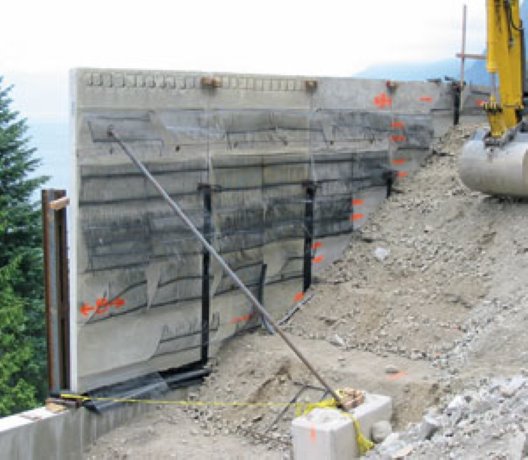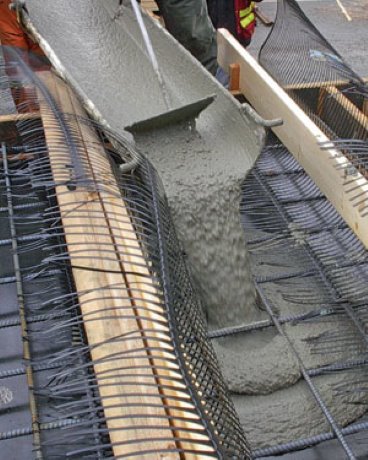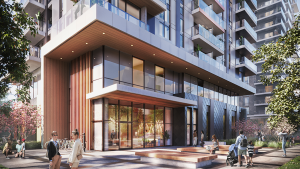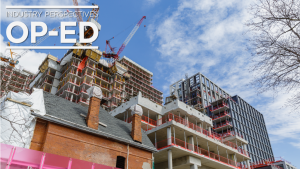Self-consolidating concrete (SCC) — a high-performance formulation that can flow into constricted spaces without requiring vibration — has gained widespread use in commercial construction, particularly where deep pours are required on a short schedule.
Innovation
Sea-to-Sky road makes good use of SCC panels
Self-consolidating concrete (SCC) — a high-performance formulation that can flow into constricted spaces without requiring vibration — has gained widespread use in commercial construction, particularly where deep pours are required on a short schedule.
But SCC is increasingly being used in roadbuilding applications as well.
SCC is made largely of traditional concrete ingredients mixed with superplasticizers in a proprietary formula which can be altered depending on the application.
“In Ontario, we’re seeing our brand of SCC, Agilia, used in road construction primarily in bridges, road pillars and rehabilitation,” says Bill Lambros, Agilia Specialist with Lafarge Canada.
The product has been used in such diverse projects as pouring pillars on the tight schedule required for Edmonton’s Ring Road, a four-lane bridge over Fish Creek in Calgary, and the rehabilitation of pillars supporting Toronto’s Gardiner Expressway.
“It’s having an impact on road construction in terms of the reduced labour requirements, quality of the finish and ease of placement,” says Lambros.
“The Ontario Ministry of Transportation has issued a number of new specs on the shrinkage limit of formulations used in rehabilitation. The old mixes don’t meet those standards but SCC does.”
Advocates of SCC point to the product’s safety factor. Roadbuilding crews pouring SCC pillars and bridge supports aren’t required to enter the forms to consolidate the material.
Case-in-point: a 13-metre pillar used in the Edmonton Ring Road was poured continuously over six hours without human intervention.
A traditional application would have required three pours over three days and the use of valuable construction crew resources in consolidating each layer.
Because SCC has a high rate of flowability, it isn’t typically used in long stretches of road where uneven terrain will distribute the material according to gravity. However, the material can be used to construct road bases.
A recent project in Edmonton involved the conversion of a 164-metre median strip into turning lanes. Instead of using conventional Class B concrete, contractor Wells Construction used Agilia to pour the road base. The project was completed in half a day with a four-person crew. Original estimates for a conventional base would have taken a 10-person crew two days.
Earth retaining pre-cast panels used on British Columbia’s Sea-to-Sky Highway were made of SCC, says Mike Meacher, Lafarge’s manager of quality assurance and new product development lab in Vancouver.
“The earth-retaining system featured a mesh backing and it was difficult to consolidate regular concrete around that mesh,” he says. “The panels were completed with a perfectly smooth finish, but unfortunately, nobody is going to see it except trains and wildlife.”
SCC is also being considered in a moderately sloped application, says Meacher.
“We are going to attempt some repair work on BC’s Alex Fraser Bridge which has a five per cent slope.
“They’re replacing the main expansion joints and they need the concrete mix to get underneath the seal of the joints to get good consolidation there. The problem with using standard concrete is that you can vibrate all you want but you’re never sure you can fill those hidden areas properly.”
Because Agilia so closely fills the forms used to shape it, the product has provided designers with a side benefit — it’s now being used to create intricately detailed patterns in concrete walls.
“It will mirror anything it comes in contact with,” says Lambros. “If you use plywood for the forms, you can see the wood grain in the finish.”

Agilia panels are placed along a road construction site. Self-consolidating concrete (SCC) flows into constricted places and can help address the often tight construction schedules allowed for some projects.











Recent Comments
comments for this post are closed